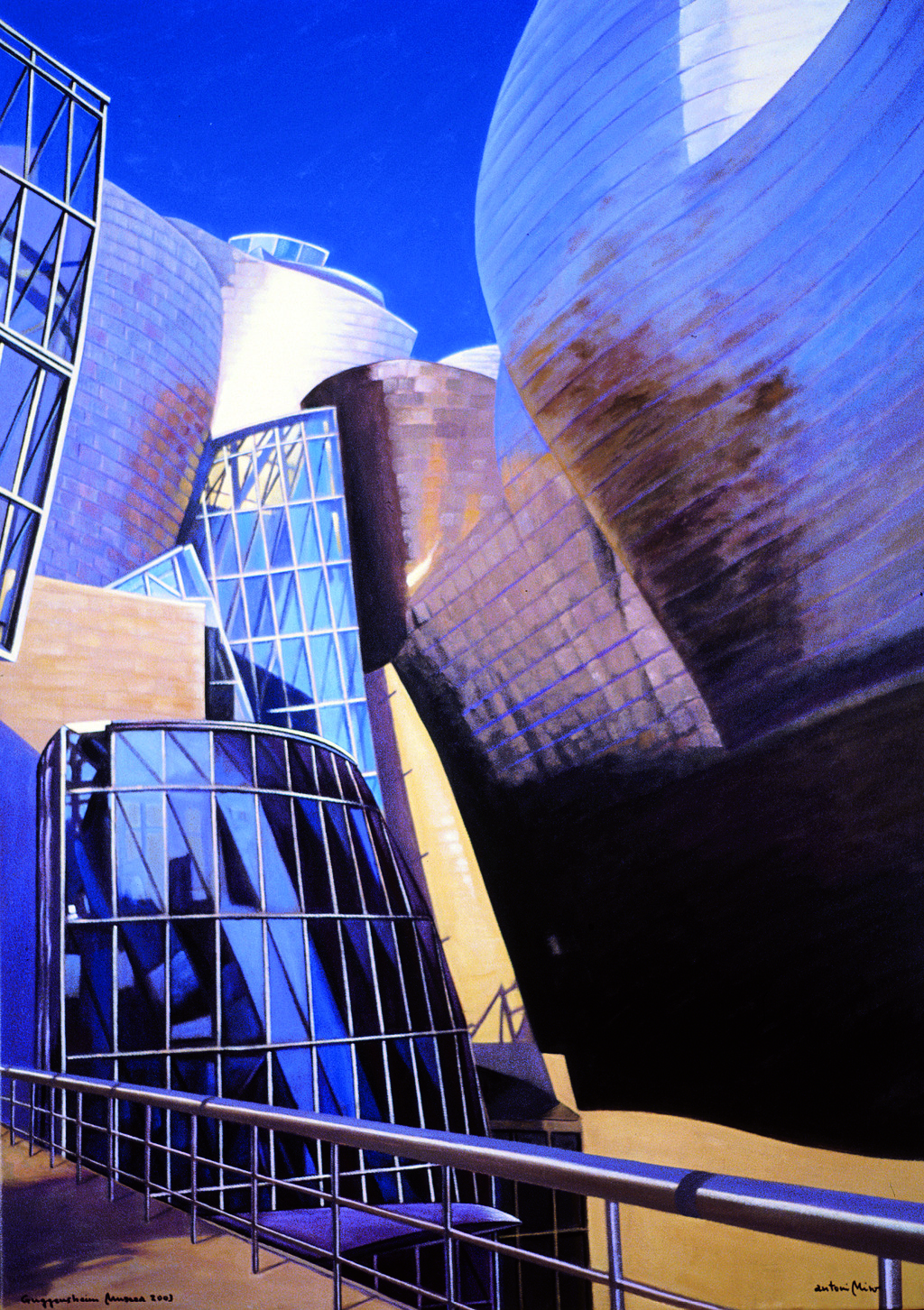Guggenheim museoa (Guggenheim museum)
This is one of the works included in the series about museums. On several occasions (and this is one of them) Miró is caught between appreciating a museum’s monumental qualities and denouncing the huge sums lavished on their construction.
A dialectic approach is taken to the two functional aspects of Bilbao’s Guggenheim Museum (that is, protection of art works and their divulgation) and its representative condition. Against the remarkably singular nature of the building (which, in principle, is merely a container for works of art), the author raises suspicion that the building itself could end up drawing so much interest that it may take all the attention away from its exhibits.
In this specific case, a partial view of the volumes surrounding the entrance to the building is shown, moving from Bilbao’s ‘grid-iron’ layout down the widening estuary. An amalgamation of smooth, glossy surfaces fold and intersect, replacing what was once a grey, dusty industrial district. The framing is decidedly partial, insisting on the idea that perception is generally produced only in a fragmented way, given the large scale of the piece and the short focal length.
Reflections between the titanium cladding and the curtain walls play off one another in a hyper-realistic way, creating capricious combinations that meld with those parts of the building covered with natural stone.
The artist not only shows the appeal of the complex system, but also reveals its bland features. The inclusion of the handrail is deliberate, symbolising a barrier to culture. Not for nothing, the reality of the picture conceals the museum’s real entrance, which channels visitors to the shop and restaurant.
Apart from the aforementioned clash, the work also bears on the criticism of the boost given to modern art throughout the 20th Century by big industrial families (whose fortunes came from over-exploitation of natural resource and workers under poor conditions). For the artist, the huge sums made through ‘slash and burn Capitalism’ — even when part of this is spent on promoting art — cannot become detached from a shameful source. Perhaps that is why he chooses to name the work with such wordplay.
Art in the age of globalisation collides with the identification of culture as a nation’s main value. Miró denounces the relentless commercialisation of art works, not only as a mere consumer good but also as a financial investment.
Santiago Pastor Vila
